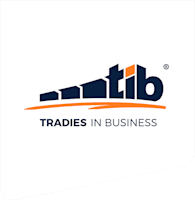Remember this advertising campaign from about 10 years ago?
[embedplusvideo height=”315″ width=”420″ editlink=”http://bit.ly/1tnWOQ5″ standard=”http://www.youtube.com/v/Y-ZLr9ePuj8?fs=1&vq=hd720″ vars=”ytid=Y-ZLr9ePuj8&width=420&height=315&start=&stop=&rs=w&hd=1&autoplay=0&react=1&chapters=¬es=” id=”ep4487″ /]While it was a less-than-successful advertising campaign for Tourism Australia, the closing question from the one and only Lara Bingle is one you should be asking yourself. Not in terms of your next holiday destination but more so in relation to your journey to ‘success’. Now that you’ve asked yourself, where you are, it’s even more important to answer in a way that’s not going to be counterproductive to you improving your results.
If you’re a regular reader of my blog you’ll know I’m a CrossFitter. Part of the CrossFit regime is olympic weightlifting and I enjoy the challenge of improving my technique in a bid to throw bigger and bigger weights around the gym. Recently we had a session involving ‘power cleans’ and my coach said something to me that really gave me a wake up call. When giving me some tips on how to refine my technique and some encouragement about how I’ve improved, I asked him “So where am I at Coach? About a 4 out of 10?” The look he gave me said it all and then he replied with “On your journey to become an Olympic weightlifter you’re exactly where you need to be.”
Part of the way that I am wired is that I like to know where I stand in relation to perfection.
I think that’s probably quite similar for a lot of people but the risk is it can be quite a damaging way of viewing your progress in life. If you’re always looking at the gap between where you are now and where you’d like to be, or where perfection is, then it can become somewhat de-motivating rather than having the opposite, desired effect.
So how can you change this (limiting) habit of simply comparing yourself to the ideal? The answer is not to simply stop making comparisons! Setting your sights on an ideal outcome can actually be a good thing, so keep doing it. Here’s a few tips that will enhance your approach:
– Also include some ‘check markers’ or shorter milestones. Pick some smaller gains or easier steps to aim for and then each time you hit one, set the next. Humans are pretty good at focusing on something shorter term but tend to get overwhelmed by big, lofty goals so break your progress into bite size chunks.
– Keep a written record of your achievements. Whether it’s a training diary for your weightlifting, a journal of your personal wins or a period-to-period comparison of your financial results, writing down your achievements makes it easier to track your progress as above and to celebrate your results and lock them in as habits.
– Finally, enroll others in your journey to success. Whether a coach, mentor, trusted friend or fellow business owner, sharing your goals, wins, fears and ideas with someone else is a great way to get more objective feedback than you can possibly give yourself. It’s also a fantastic accountability tool as it’s harder to convince someone else you’re doing all that you can, compared to the person in the mirror!
Remember also that where you are right now, no matter how much you’re earning, what your state of health is, how many and what sort of goals you’ve achieved, you’re exactly where you’re meant to be on your pathway to success in business and in life. The key is not to regret any past mistakes but accept that they had to happen for you to be in a position to achieve what you now want to. What will make all the difference to where you end up in a year, five years, ten years, is your ability to ask the question ‘where am I right now’ and, rather than beat yourself up or spend time worrying about how you’re going to get to where you want to – accept that you are where you’re meant to be and then decide what has to happen next in order to achieve your ultimate goals.
Keep lifting!
Warrick
P.S. If you’re curious, a power clean is one of the more complex weightlifting moves that involves pulling the barbell from the floor until you finish with the bar resting on your collar bones in a standing position. Check out this video for a much better description than mine!

